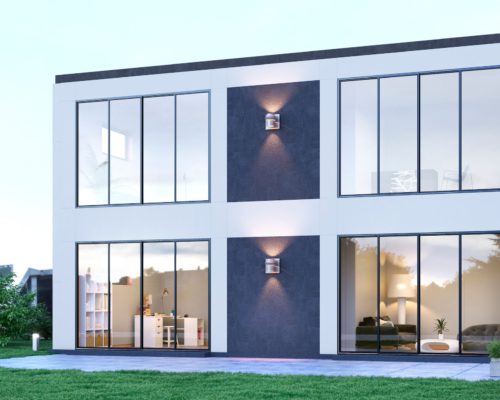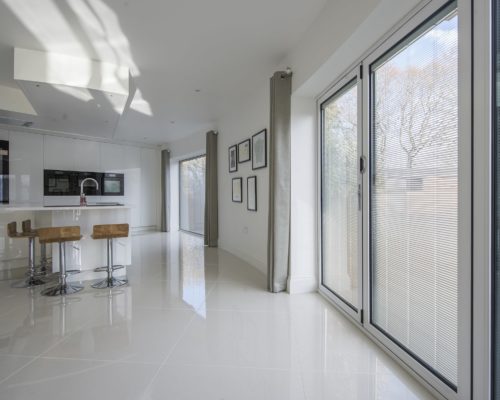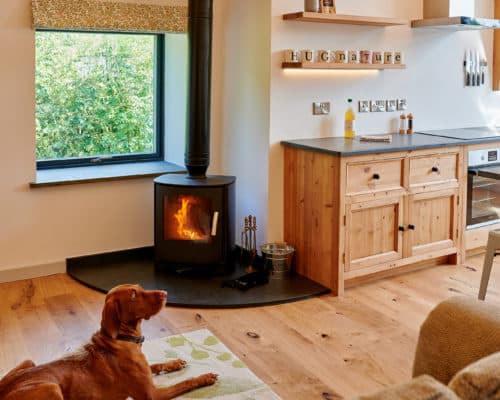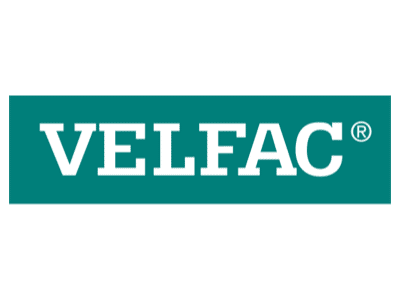Aluminium commercial doors are available with suitable hardware so that they may be highly effective and safe aluminium fire exit doors. There is a difference between a fire door and a fire exit door, so it is important to understand these differences in the way the doors perform and how they operate.
Our guide to aluminium fire exit doors explains these differences and helps you understand why commercial fire exit doors are better than residential quality doors. You should always check the correct door requirements with your local authority or Fire Officer.
Aluminium fire exit doors vs fire doors – what’s the difference?
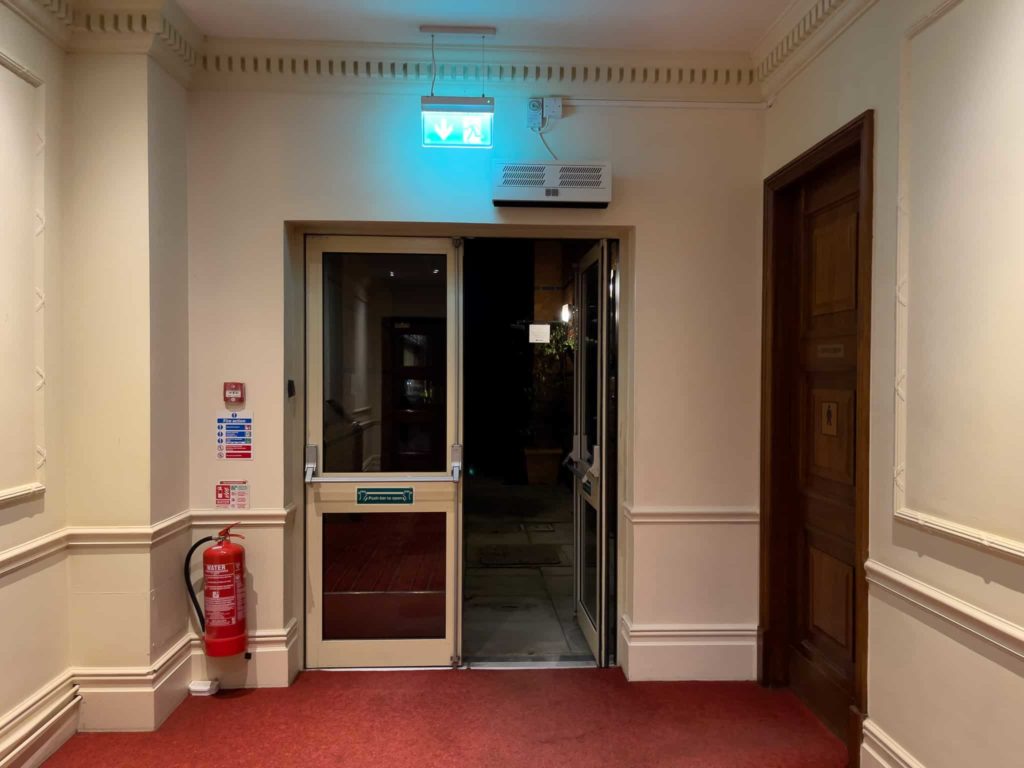
The significant difference between aluminium fire exit doors and fire doors is functionality and fire protection. Fire doors provide effective fire protection of 30 minutes, 60 minutes or more. The purpose of fire doors is to create a barrier between the fire and building zones.
Fire exit doors, like commercial aluminium doors, are usually doors designed to provide a means of escape from a building in the event of a fire. Whilst it is possible to get both fire protection and fire exit with these doors, the main use of aluminium fire exit doors is a means of escape. This article concentrates on fire exit doors, not those with a specific and certified fire rating.
The operation of aluminium fire exit doors
When escaping a building in the event of a fire, doors must be simple to use, even for someone unfamiliar with the building or the operation of a door. We all know how to operate our front doors at home or in our workplace. Aluminium fire exit doors are designed so that anyone can quickly and easily see and understand the function of the door in order to make a safe escape. Therefore the first requirement is that fire exit doors must open outwards.
A door closing device is usually fitted with aluminium commercial doors. These devices come as hold-open or non-hold-open. One holds the door at 90 degrees when pushed past the engagement point. The other has no engagement point. Both types of door closers are designed to provide effective opening and closing action, self-closing the door and latching shut. You should always check with a Fire Officer, but either door closer should be fine. The choice of door closer also depends on whether your fire exit door has external access.
Importantly a fire exit door should not have any kind of locking that makes it impossible to use the doors in an emergency. For example, you cannot have a panic bar with an additional deadlock, yet this lock can only be used with a key. A fire exit door must allow immediate exit from the building fast and effectively.
External access explained on aluminium fire exit doors
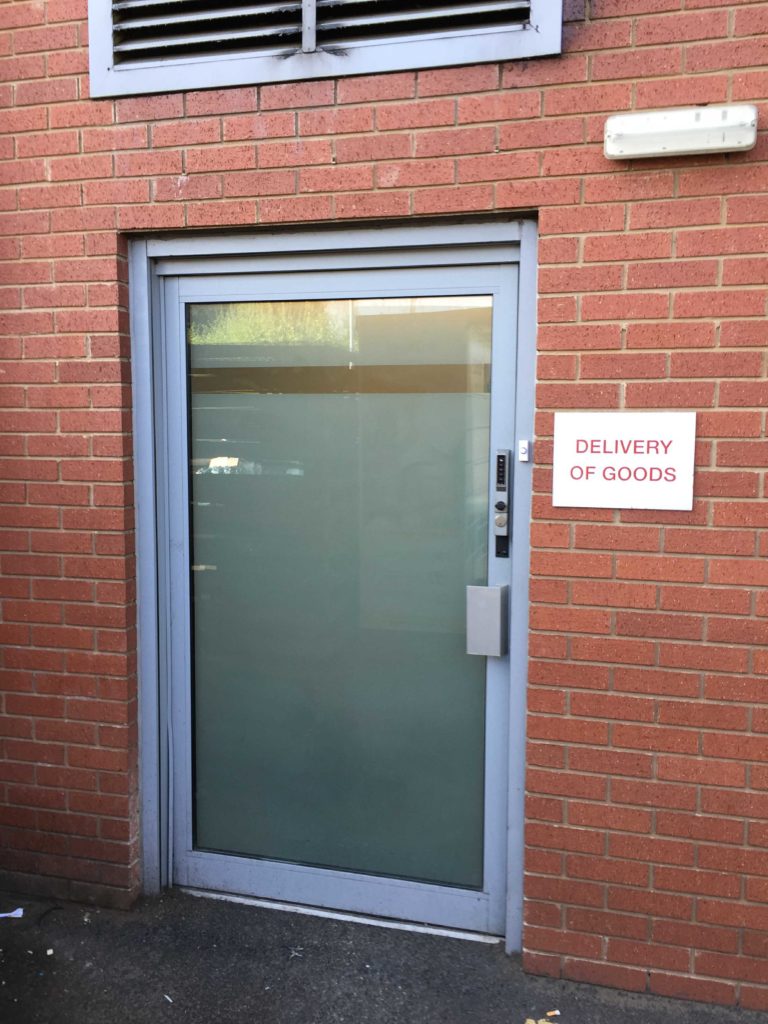
Some fire exit doors are also intended as entrance doors. For instance a factory may have a staff entrance elsewhere to the main entrance, but the building type requires this to be a fire exit door. In these situations, it is possible to have a fire-exit door with external access.
External access lets you open the door from the outside. Typically this will have a key cylinder and an external pull handle. So it’s not possible to enter through the door unless you are a key holder. From the inside, the doors operate via the panic bar as normal.
In situations where during office hours you may wish to leave the door unlocked, most panic bars and exit devices come with what is called ‘latch hold-back facility’. This keeps the rods or latch of the panic bar permanently retracted, letting users pull the handle from outside without a key to gain entry. From the inside, the door can be pushed open as normal.
Panic bar vs panic exit device what’s the difference?
A panic bar is designed to provide the required means of escape. This horizontal bar can be pushed anywhere along its width and will always retract the bolts and provide easy access. Industry standards also stipulate that panic bars must be at a set height from finished floor level.
A panic exit device can be a lever handle, a push-to-exit handle or other types of hardware. Whilst this performs the same operation in retracting a latch or rods, it is usually much smaller and fixed to the locking side of the door.
The simple difference between a panic bar and a panic exit device is that the full-width bar is designed to be used by anyone unfamiliar with how the door operates in an emergency situation. Panic exit devices are normally fitted to doors that building users are usually more familiar with. Both types can be exit only or have a key operation on the outside. And both can be retracted for daytime use as mentioned earlier.
On double doors, panic bars should operate either door in an emergency. This differs from French doors at home, where the primary leaf must always be unlocked and used before the secondary leaf.
More information about aluminium doors providing a fire escape
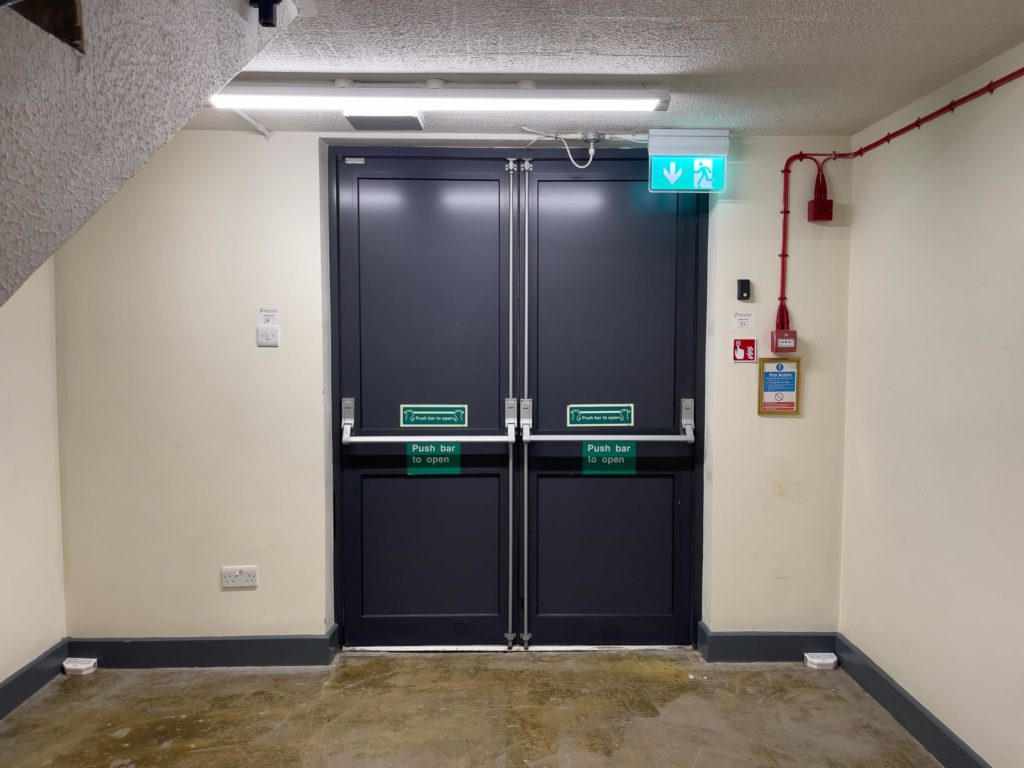
It is possible to have single or double fire exit doors as well as doors integrated with shopfronts and curtain walling. You get an excellent choice of handles and panic bar devices, including modern alternatives that are stylish yet effective.
Aluminium commercial doors are available with thermally broken profiles or non-thermal for building applications where insulation is not required. Doors also come with safety glass units as well as the whole range of design and functional options you only get with commercial glazing systems.
Manufacturers and suppliers of quality aluminium fire exit doors – get a free quote today.
Using the highly specified, tried and tested Senior Architectural and Reynaers Systems, C&A Window Systems manufactures aluminium commercial doors suitable as fire exit doors with complementary entrance doors, access doors, shopfronts and screens.
We manufacture our range of aluminium fire exit doors for schools, offices, hospitals, local businesses and all manner of commercial buildings. Contact us today to find out more about our commercial doors and windows, and let us help you with your building project.

